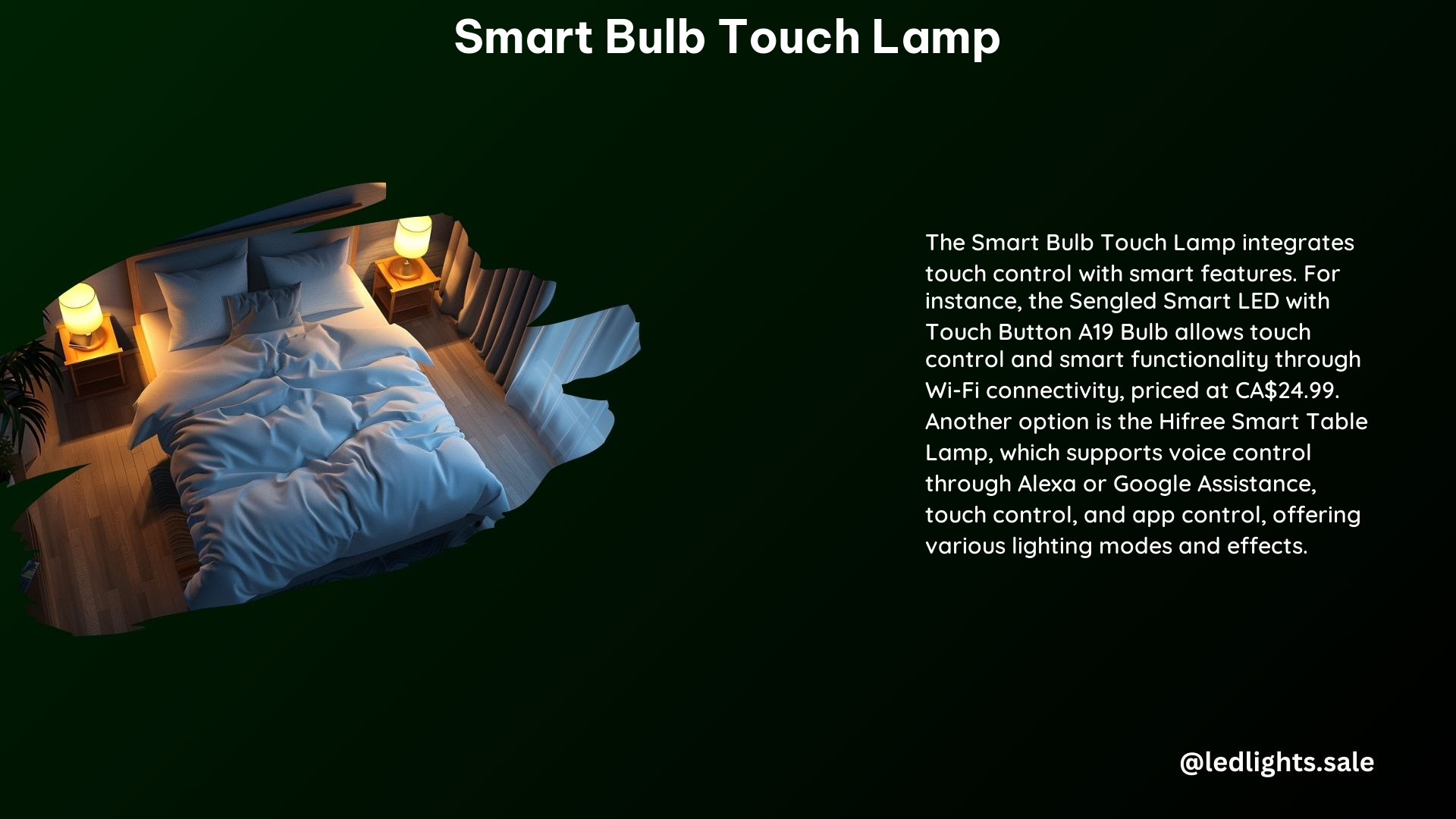Smart bulbs in touch lamps offer a unique blend of convenience and advanced features, allowing users to control their lighting with a simple touch or through voice commands and mobile apps. However, the seamless integration of smart bulbs with physical touch switches can be a nuanced and complex topic. In this comprehensive guide, we’ll delve into the intricacies of smart bulb touch lamps, exploring their capabilities, compatibility, and troubleshooting solutions to ensure a smooth and efficient smart home experience.
Understanding Smart Bulb Behavior with Physical Switches
One of the key features of smart bulbs in touch lamps is their ability to remember their previous state when the physical switch is turned off and on. This functionality, however, is dependent on the specific smart bulb model and its underlying capabilities. Some smart bulbs, such as the Sengled Smart LED with Touch Button A19 Bulb, are designed to retain their previous state even when the physical switch is cycled.
To ensure seamless operation with the physical switch, smart bulbs in touch lamps may require additional hardware modifications. For instance, some users have reported success in replacing the touch switch with a smart switch, like a Sonoff device, or rewiring the lamp to eliminate the touch switch altogether. These hardware interventions can help ensure that the smart bulb functions correctly, even when the physical switch is turned off and then back on.
Handling Quick Switch Cycles

When the lamp switch is turned off and then quickly back on, smart bulbs in touch lamps can respond in various ways. Some bulbs might retain their previous state, while others might default to a specific mode or brightness level. The specific behavior of the smart bulb in such scenarios is largely dependent on the bulb’s programming and design.
To better understand the nuances of quick switch cycles, let’s examine the technical specifications of the Hifree Smart Table Lamp:
| Specification | Details |
|---|---|
| Control Methods | Touch, APP, and Voice (compatible with Alexa and Google Assistant) |
| Dimming | Adjustable brightness (0-100%) |
| Color Options | Warm white, cool white, RGB color changing cycle, and sleep night light mood |
| Additional Features | Natural rhythm light, timer, and schedule setting |
The Hifree Smart Table Lamp, for instance, is designed to handle quick switch cycles by retaining the previous state of the bulb. This means that if the lamp is turned off and then quickly back on, the bulb will resume its previous brightness, color, or mode settings. However, the specific behavior may vary across different smart bulb models and manufacturers.
Troubleshooting and Compatibility Considerations
To ensure a seamless experience with smart bulbs in touch lamps, it’s essential to consider compatibility and potential troubleshooting steps. Some smart bulbs may not be designed to work with traditional touch switches, leading to inconsistent behavior or even complete failure to function.
In such cases, users may need to explore alternative solutions, such as:
-
Replacing the Touch Switch: As mentioned earlier, replacing the physical touch switch with a smart switch, like a Sonoff device, can help overcome compatibility issues and ensure reliable operation of the smart bulb.
-
Rewiring the Lamp: Another option is to rewire the lamp to eliminate the touch switch altogether, allowing the smart bulb to function independently without the physical switch interference.
-
Firmware Updates: Checking for and installing the latest firmware updates for the smart bulb can sometimes resolve compatibility issues and improve the overall performance of the device.
-
Consulting Manufacturer Support: If the above troubleshooting steps do not yield the desired results, reaching out to the smart bulb manufacturer’s support team can provide valuable guidance and assistance in resolving any compatibility or operational concerns.
Conclusion
Smart bulbs in touch lamps offer a unique and convenient way to control your home lighting, but navigating their integration with physical switches can be a nuanced process. By understanding the specific capabilities and limitations of your smart bulb model, as well as exploring potential hardware modifications and troubleshooting techniques, you can ensure a seamless and reliable smart home lighting experience.
Remember, the key to success with smart bulb touch lamps lies in staying informed, experimenting with different solutions, and being willing to adapt to the unique requirements of your setup. With the right approach, you can unlock the full potential of your smart home lighting and enjoy the benefits of advanced lighting control at your fingertips.
